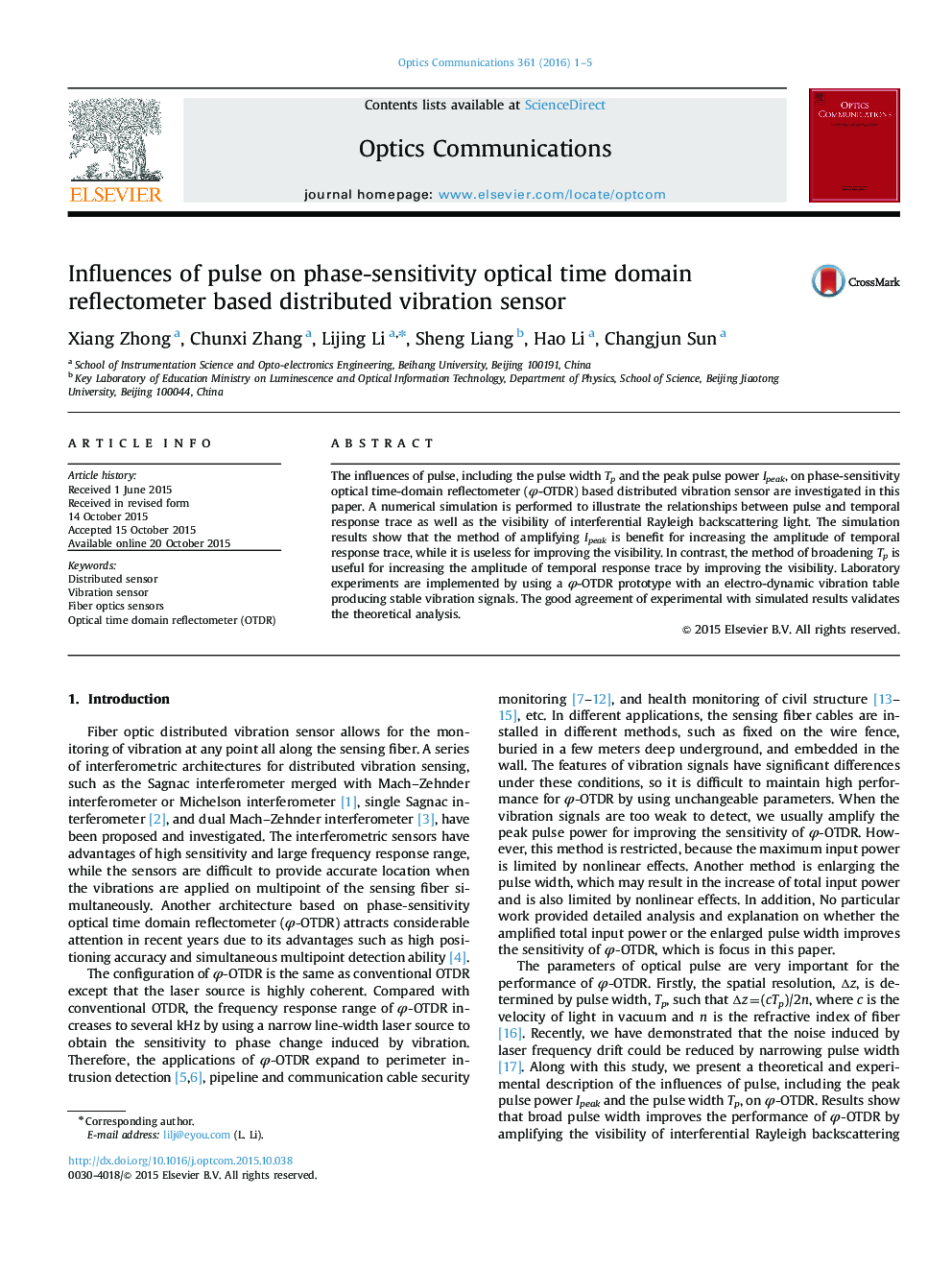| Article ID | Journal | Published Year | Pages | File Type |
|---|---|---|---|---|
| 1533805 | Optics Communications | 2016 | 5 Pages |
•We study the influences of pulse, including pulse width and peak power, on φ-OTDR.•Amplitude of temporal response trace and visibility is employed to evaluate φ-OTDR.•Increasing peak power increases amplitude, but is useless for improving visibility.•Broadening pulse width increases amplitude by improving visibility.
The influences of pulse, including the pulse width Tp and the peak pulse power Ipeak, on phase-sensitivity optical time-domain reflectometer (φ-OTDR) based distributed vibration sensor are investigated in this paper. A numerical simulation is performed to illustrate the relationships between pulse and temporal response trace as well as the visibility of interferential Rayleigh backscattering light. The simulation results show that the method of amplifying Ipeak is benefit for increasing the amplitude of temporal response trace, while it is useless for improving the visibility. In contrast, the method of broadening Tp is useful for increasing the amplitude of temporal response trace by improving the visibility. Laboratory experiments are implemented by using a φ-OTDR prototype with an electro-dynamic vibration table producing stable vibration signals. The good agreement of experimental with simulated results validates the theoretical analysis.
